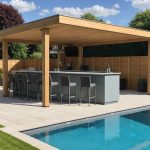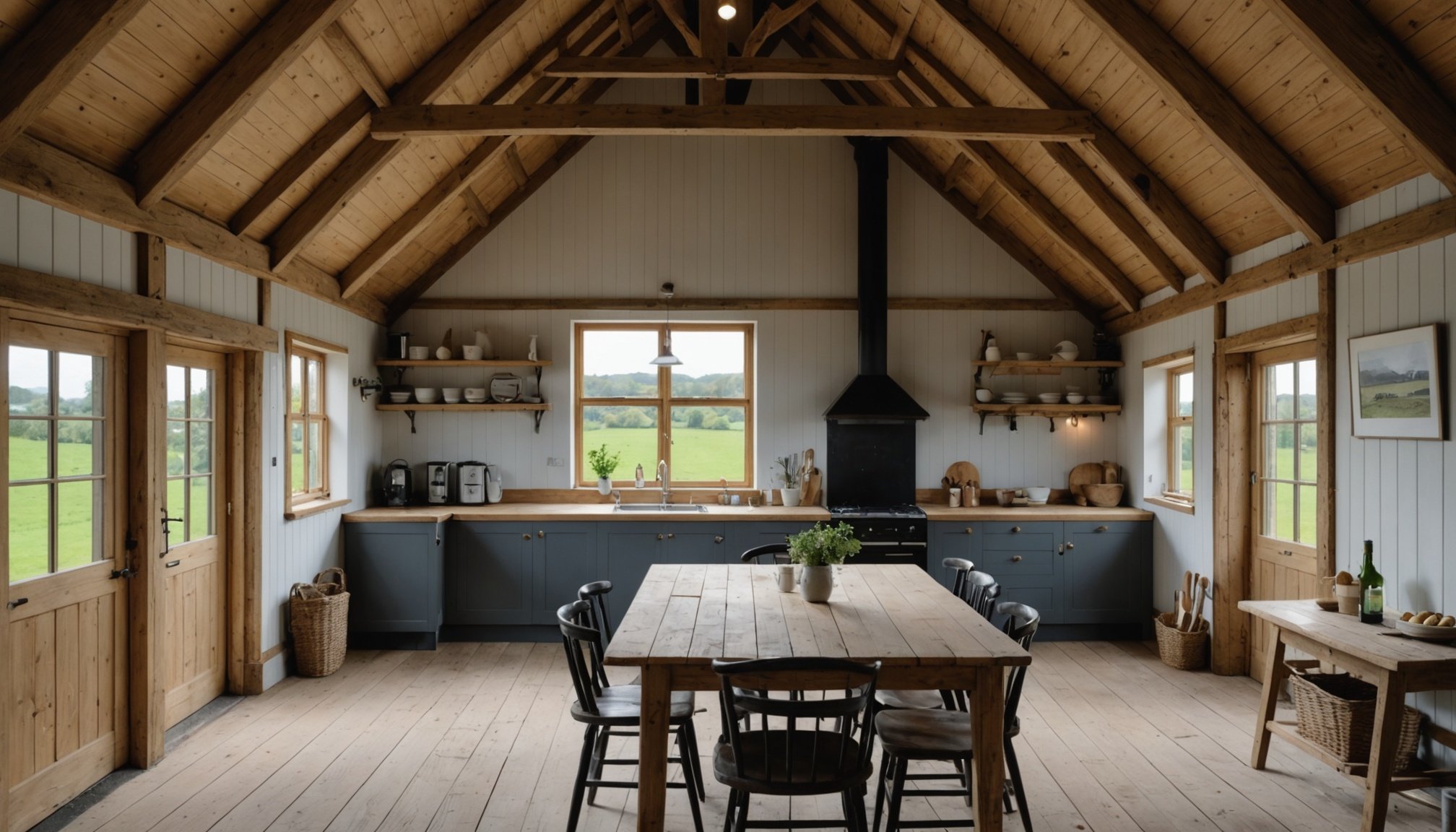Overview of Barn Conversion in Rural Wales
Transforming a barn into a cozy home in rural Wales offers more than just a unique living space. Barn conversion plays a crucial role in preserving the rich heritage of this region, providing a cozy home while maintaining architectural history. In rural Wales, these structures echo tales of a bygone era, making them ideal candidates for preservation through conversion.
With its lush landscapes and tranquil atmosphere, rural Wales adds a specific charm to barn conversions. The serene environment creates a perfect backdrop for those seeking a harmonious blend of history and comfort. Converting a barn into a residence here not only maintains the structural legacy but also introduces modern comforts, creating a warm and inviting cozy home.
Also to read : Essential Security Strategies for Protecting Your Home in London”s High-Crime Areas
The process of barn conversion involves understanding the unique character of rural Wales. It requires retaining traditional elements while incorporating necessary modern amenities. These conversions celebrate the essence of the countryside, making each home a testament to history and that distinct Welsh allure. As you embark on this transformation journey, appreciate the balance of preserving heritage and crafting a personal retreat that resonates with the calming beauty unique to rural Wales.
Planning Your Barn Conversion
Turning your vision into reality begins with meticulous planning. A successful barn conversion requires careful consideration and consultation with local planning authorities. Understanding local regulations is crucial, as each region may have specific requirements for conversions, including design constraints and structural integrity assessments. This early step can save time and money by ensuring compliance from the outset.
Also read : Key Considerations for Your Property Survey When Purchasing Near the River Thames
Once the basics are covered, harmony between modern and traditional aesthetics becomes paramount. Balancing contemporary design with the barn’s rustic charm is an art. Achieving this involves selecting design ideas that respect the barn’s original architecture while integrating modern features for enhanced comfort and functionality.
Engaging a professional with experience in barn renovation is advisable to harmonise these elements successfully. They will assist in creating a design that is both innovative and respectful of the structure’s heritage.
Moreover, performing a detailed renovation plan reduces unforeseen setbacks. Planning not only encompasses architectural style but also initial cost evaluations, gaining knowledge about materials, and logistics for construction. Keeping subtle decor choices, like natural wood and stones, ensures your barn’s transformation is authentic yet distinct. This approach ensures your barn conversion is both a cozy home and a testament to the region’s distinctive allure.
Structural Alterations and Engineering
Structural changes are vital in ensuring the safety and longevity of barn conversions. Before proceeding, engage an experienced engineer for a thorough engineering assessment. This evaluation helps identify areas requiring structural improvement, such as unstable beams or weak foundations, which could compromise the barn’s integrity.
Hiring seasoned engineers and contractors is crucial. These professionals not only understand safety regulations but also ensure compliance with building alterations. They are adept at navigating the complexities of transforming a historical structure into a functional residence while respecting its natural aesthetic.
Safety is the priority in any construction project. Adhering to all safety guidelines is indispensable for the protection of both the property and its occupants. Compliance with local building codes is mandatory. Failure to comply could lead to costly fines or, worse, unsafe living conditions.
The strategic partnership between structural engineers, contractors, and the property owner forms the backbone of a successful renovation. By focusing on expert evaluation, adherence to regulations, and meticulous structural improvements, a barn conversion becomes a safe and appealing cozy home.
Interior Design Ideas for Cozy Living
Creating a cozy atmosphere is essential in a barn conversion, blending rural charm with modern warmth.
Colour Schemes and Materials
Opt for a palette of warm, muted tones that echo natural landscapes. Colours such as earthy browns, soft greens, and subtle greys harmonise with a barn’s rustic features. Incorporate natural materials like reclaimed wood and stone to add texture and authenticity.
Furniture Choices
Furniture selection should respect the barn’s unique architecture. Pieces crafted from wood or metal, with a vintage or farmhouse style, enhance the rustic appeal. Embrace the space’s open design by incorporating large, comfortable seating options that invite relaxation.
Lighting Options
Lighting plays a critical role in accentuating the barn’s features while creating a welcoming environment. Utilise a mix of ambient and task lighting to highlight original beams and stonework. Consider pendant lights or chandeliers for high ceilings, and add floor or table lamps for cosy corners.
With thoughtful interior design, a barn can transform into an inviting and cozy home, retaining its historic charm while offering modern comforts.
Legal Requirements and Building Regulations
Before initiating a barn conversion, it’s pivotal to understand the legal considerations. Adhering to local building regulations ensures both safety and compliance. In rural Wales and beyond, these rules safeguard the unique architectural features while enabling modern conveniences.
Every barn conversion requires essential permits. These permits, mandatory before commencing work, guarantee that the conversion aligns with regional planning guidelines. Failing to secure them can lead to costly delays or legal issues. Knowledge of the required documentation and engaging professionals adept in navigating these waters is advisable.
Understanding and adhering to building codes is non-negotiable. These codes maintain structural integrity, particularly crucial when retrofitting historical buildings with contemporary amenities. They encompass not only the safety of the conversion but also aesthetic preservation, ensuring your barn remains a harmonious part of its environment.
Thorough preparation and adherence to legal requirements are the bedrock of a successful, hassle-free barn conversion. By securing all necessary permits and following building regulations diligently, you safeguard your investment while respecting the rich architectural tapestry of rural Wales.
Environmental Considerations and Sustainability
Ensuring your barn conversion is sustainable not only supports environmental health but enhances the value of your cozy home. Prioritize eco-friendly practices by sourcing sustainable materials, like reclaimed wood and locally-produced stone. These elements not only reduce the environmental footprint but also align with the rustic charm of rural Wales.
Incorporating energy efficiency is vital. Modern insulation techniques, like sheep wool or hemp, can drastically reduce heating costs while maintaining a comfortable indoor climate. Consider installing energy-efficient heating systems, such as underfloor heating, and solar panels to provide sustainable energy solutions.
Evaluating the environmental impact of construction processes and materials helps in making informed decisions that benefit both the planet and your home. Opt for low-VOC paints and green building techniques to protect indoor air quality. Engaging professionals experienced in sustainable construction ensures your barn conversion is both environmentally and historically respectful.
Budgeting Your Barn Conversion
Embarking on a barn conversion journey involves careful financial planning. Start by creating an itemised list of typical costs, including structural enhancements, interior design, and renovation expenses. Understanding these costs upfront provides a realistic budget framework, helping to prevent overspending.
Effective financial planning is crucial. Begin by researching and analysing potential expenses, such as permits, engineering assessments, and materials. Consider setting aside a contingency fund for unforeseen costs to maintain project momentum even when surprises arise.
Working closely with finance professionals aids in crafting a feasible budget. Their expertise can offer insights into potential cost-saving measures, such as utilising sustainable, cost-effective materials and local resources.
Timelines are equally important. Establish realistic milestones and deadlines to manage the project’s pace and avoid unnecessary delays. Evaluating timeframes with contractors and planning authorities aids in aligning expectations and streamlining the process.
By focusing on comprehensive cost estimates and strategic budget management, the barn conversion transforms from a financial challenge into a cozy home investment, ensuring peace of mind throughout the project.
Sourcing Materials and Contractors
Transforming a barn into a cozy home in rural Wales begins with thoughtful sourcing of materials and selecting the right contractors. Ensuring quality in these elements helps preserve the structure’s integrity and historical charm. Finding contractors with experience in barn conversion is essential. They possess the skills to blend traditional aesthetics with modern functionality.
Start by sourcing materials that resonate with the barn’s natural surroundings. Reclaimed wood and locally-sourced stone offer authenticity and align with environmental goals. Local markets often provide a wealth of resources and allow you to support the community.
When finding contractors, seek those familiar with both traditional and modern construction techniques. Their experience could be the difference between a standard job and a project that exceeds expectations.
Local networks can be invaluable. Community recommendations often highlight the most reliable and skilled professionals. Join forums or local groups focused on construction and renovation for insights. Not only does this simplify the process, but it also connects you with potential financing options or materials at reduced costs.
Involving local craftsmanship not only enriches the conversion but also builds enduring connections within the community.











